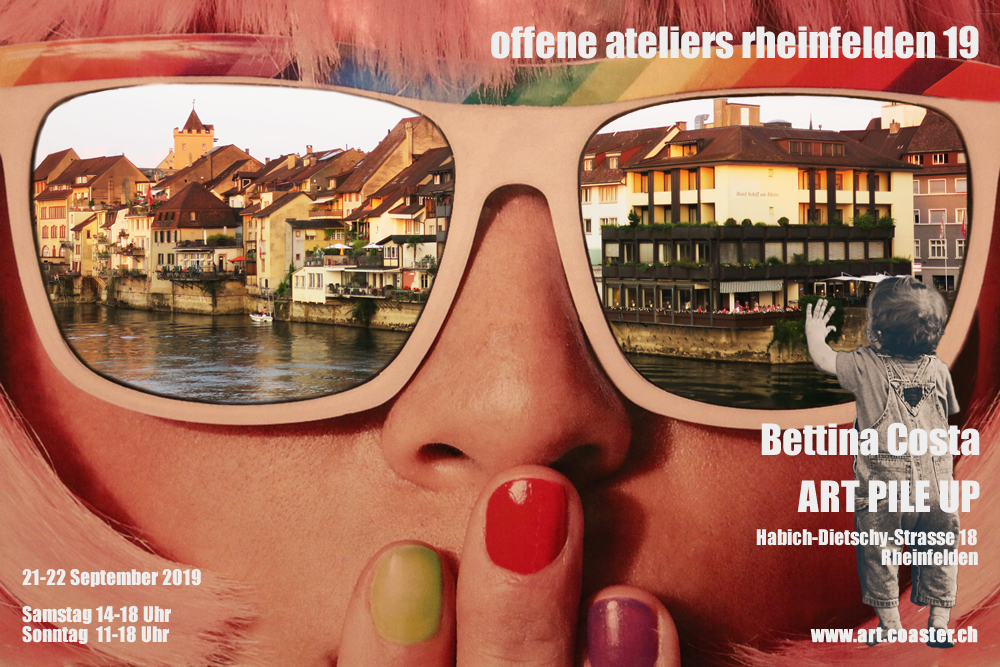17 – 20 September 2020, 10 – 18h
kunsthallekleinbasel
Steinenbachgässlein 13
4051 Basel, Switzerland


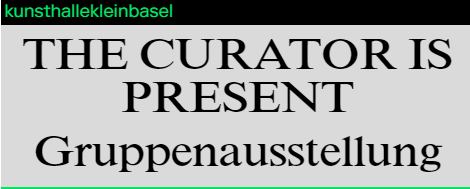

ARTE
17 – 20 September 2020, 10 – 18h
kunsthallekleinbasel
Steinenbachgässlein 13
4051 Basel, Switzerland



Vernissage:
Friday, 4 September, 18h – 22h
Open to the public:
Saturday, 5 September, 11h – 21h
Sunday, 6 September, 11h – 15h
Basel Art Center
Riehentorstrasse 31, 4058 Basel, Switzerland
Sunday, 23 August 2020, from 11 to 17
KOLLEKTIV STREUNENDER HUND – FAF 2020 80
Strahlholz 228, Parking, Bus stop Strahlholz
9056 Gais, Switzerland
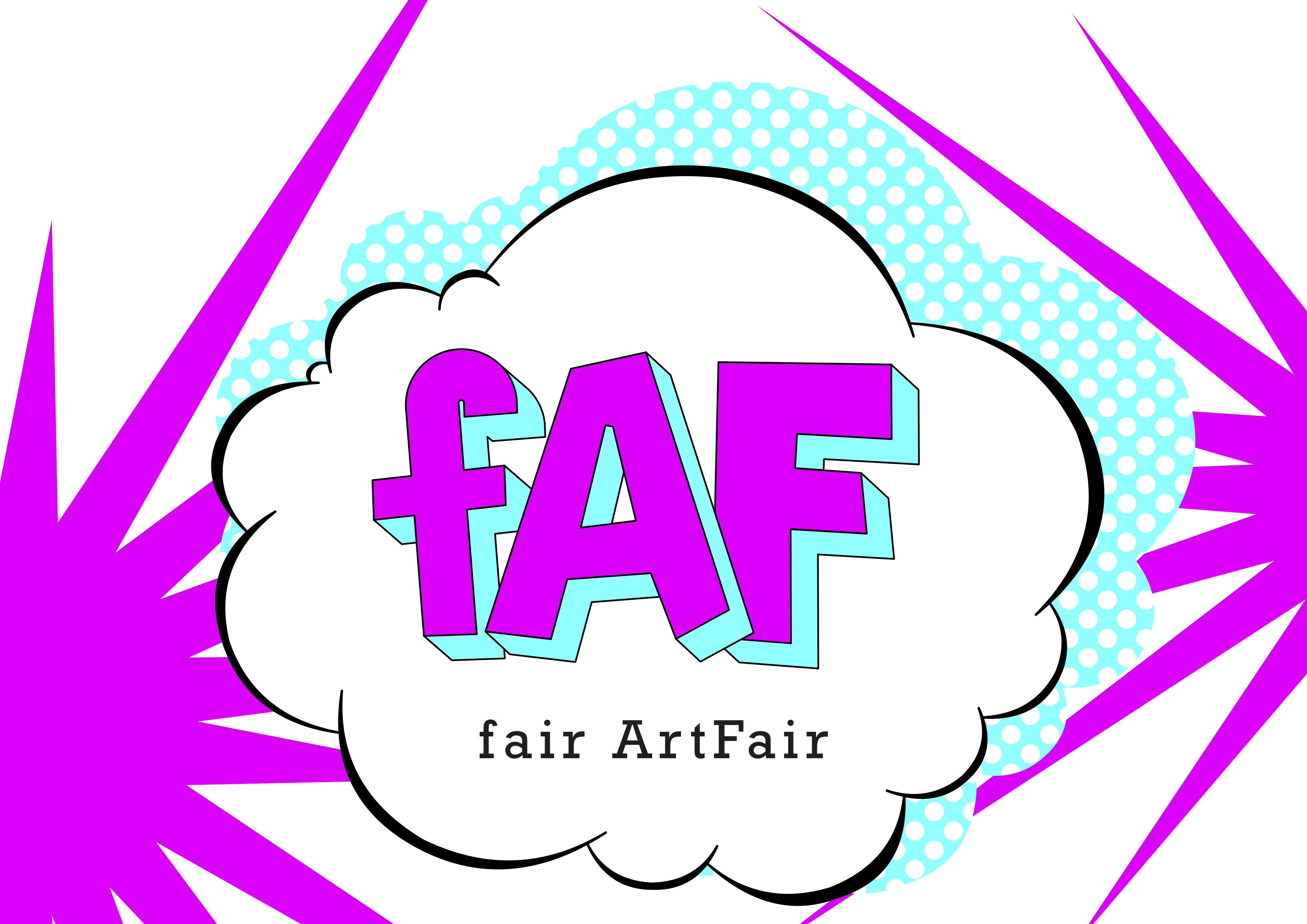
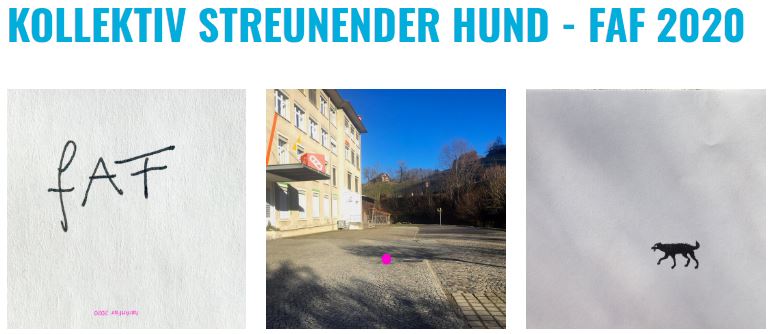
The time their art
First, I would like to say that I am very sorry for everyone affected by COVID-19, both economically as well as in terms of health.
However, I would like to try, as far as possible, to draw something positive from this situation.
It is really a pity that so many events have been cancelled or postponed. I miss the art fairs, vernissages or museum visits without distance «paranoia», not because of the artworks, but because of the people. But we can be happy that we live TODAY. Thanks to the digitalization, we have access to an incredible amount of things. Instead of the cancelled Open House in Basel, I was virtually at the Open House in Rosario, Argentina, my hometown. This would not have been possible before. Nor is it likely that I would have been in town for the occasion.
It is an opportunity to develop new models. Bringing new ideas to life. It is always said: «When you have everything, you don’t have to think about anything new.» Some things are no longer possible at the moment. We have to think about how to do something nice out of this situation. Man becomes inventive. As for example the neighbours of Im Kunzental in Rheinfelden, who during weeks held mini-concerts at 6 p.m. every day.
It’s a time to think: Which of all the things, that are no longer possible at the moment, are really so important? Isn’t it a liberating feeling to realize that especially material objects are no longer so necessary? We can live with much less. We identify what is necessary. The consumption mania is currently out of place.
As an artist, I enjoy this time, pulling the brakes and letting myself being inspired by this extraordinary constellation.
I also see the situation of many fellow artists in Spain. Especially in the cities, the flats are not big, have small rooms and maybe a smoking balcony. The social life usually takes place on the street. For about two months there was a lockdown. Many artists report that art helped them in these difficult times not to freak out; they got more creative, a lot was produced. But many of them live exclusively from tourism, because the Spaniards are still digesting the financial crisis. This means only income from online sales until the situation normalizes. And also after that, who knows…
Nevertheless, when I read that in the channels of Venice the water looks cleaner, or that in Mar del Plata (Mallorca of the Argentines) sea lions take control of the otherwise overrun port city, I see the positive effects of the pandemic.
Perhaps the coronavirus is a signal to ask ourselves: does it really make us happier when we run like crazy around the world?
And one last thought: let us show solidarity, let’s think of the other, protect yourself, protect yourselves, let’s all protect one another.
View original article in German (2xRheinfelden July/August 2020)

Friday, 6 September 2019
RHEINFELDEN. The artist Bettina Costa from Rheinfelden now also has a public artwork at a prominent location in Budapest. This was commissioned by the Argentine Embassy. It is located on the pavement of the avenue «Andrássy út», which belongs to the Unesco World Heritage, directly in front of the Argentine Embassy. The «Vereda» (Argentinian for pavement) was officially inaugurated by the Minister of Culture of the City of Budapest and the Argentine Ambassador.
The «Vereda del Tango Argentino – Km 11939» shows the basic steps of tango. The kilometer refers to the distance to a vereda in Buenos Aires taken as reference. Since 2016 the «Vereda del Tango – Km 11255» is located in Rheinfelden at the Kurbrunnenanlage.
In 2018 the artist participated in the Art Market Budapest with the gallery a-space. This is one of the most important art fairs in Eastern Europe. The Argentine Ambassador was so enthusiastic when he saw photos of the vereda in Rheinfelden, that he decided that he absolutely wanted one in front of his residence in Budapest. After long planning and two days of work, this amusing artwork can now be danced.


28 August 2019 – 09.08 AM
Photos by George Konkoly-Thege
Tango is included in the UNESCO Intangible Cultural Heritage Lists of neighbouring South American countries Argentina and Uruguay. This is the explanation for the mysterious footprints that appeared on the pavement outside the Argentine Ambassador’s Residence at 96 Andrássy út. The idea is that the pedestrians practise the eight basic steps of the dance right there on the spot, as it could be seen at the inauguration of the artwork on August 26, 2019.
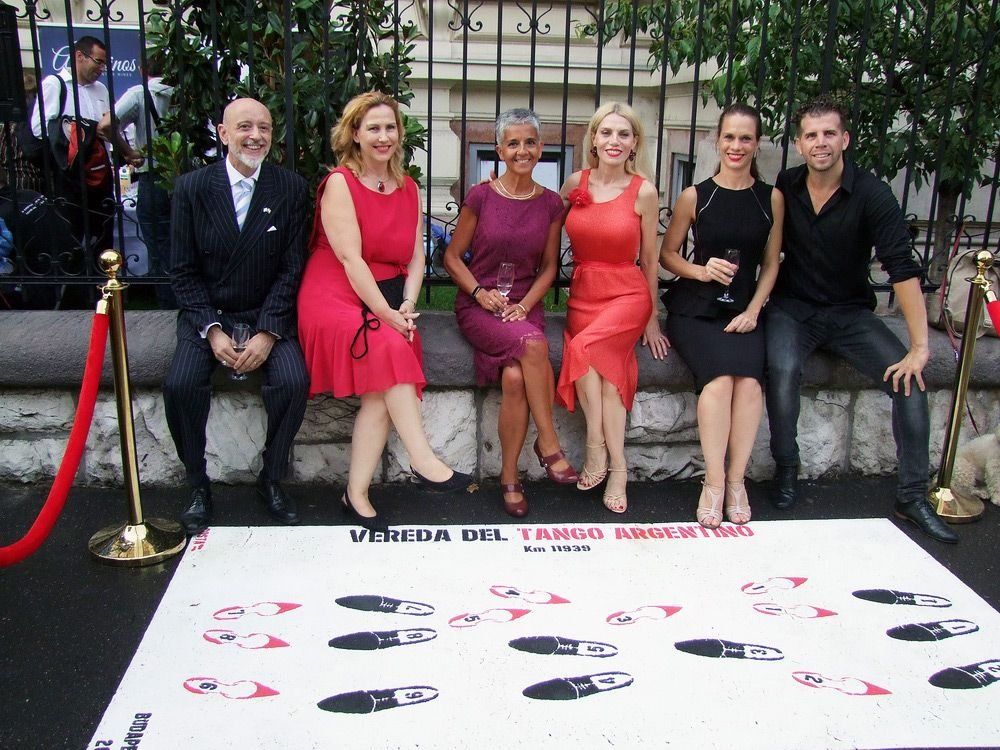
These «Veredas del Tango» or «Sidewalks of Tango» are to be found in various districts of the Argentine capital city Buenos Aires and have become a symbol of the «City of Tango». The most famous Vereda, identified with «Km 0» is found at Avenida Callao 1078. The creation of Bettina Costa, the Budapest’s own «Vereda del Tango» is exactly 11939 kilometres away and thus has been designated with «Km 11939».
I was born in Argentina, the cradle of tango, however I never paid much attention to this part of my culture. I considered tango as something «for old people». I never thought I’d ever be interested in tango until I emigrated.
Costa explains: «At the beginning of the 20th century, Argentina was full of immigrants seeking their fortune and hoping to return to Europe or bring their families across the ocean. The tango lyrics reflect the deep feeling of loss of these immigrants and the nostalgia for the people and places they left behind. Tango helped them to forget their worries.»
I am also an immigrant; I came to Switzerland for a quite different reason. I was never homesick but perhaps unconsciously I was looking for something not to lose my roots. With tango, I found it.
The past few years she has dealt intensively with the subject tango. Besides painting, she began to work with collages and stencils, the latter influenced by street art. In 2016 she decided to implement the tango variations much more conceptually and went for the first time away from the walls with the project «Vereda del Tango».
The first «Vereda del Tango» outside Argentina is in Rheinfelden, Switzerland, exactly 11255 kilometres away from the «Vereda del Tango – Km 0» in Buenos Aires.
Then followed carpet installations: shoe-shapes cut on carpet and arranged showing the tango steps, placed on the floor or on a wall. During the Art Basel week 2017 she presented the project «Cancha de Tango»: a rectangular rolling-grass area on the gravel showing the tango steps. The steps were marked with whiting spray like in any playing field or «cancha» (Spanish for playing field).
During the Art Market Budapest she presented the installation «Tangország»: tango steps cut on carpet and applied half on the wall, half on the floor. Additionally there was an unofficial «Vereda del Tango» outside which invited the visitors to the fair to try some tango steps.
But don’t worry people of Budapest: the artwork at 96 Andrássy út is painted on the pavement and is slip-resistant.

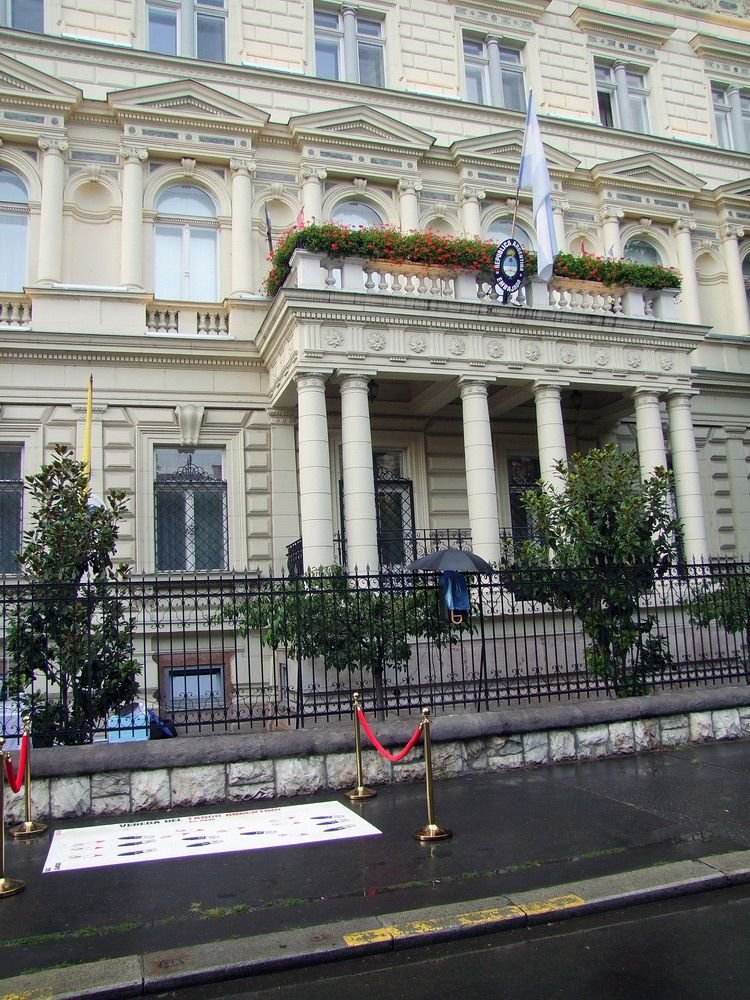

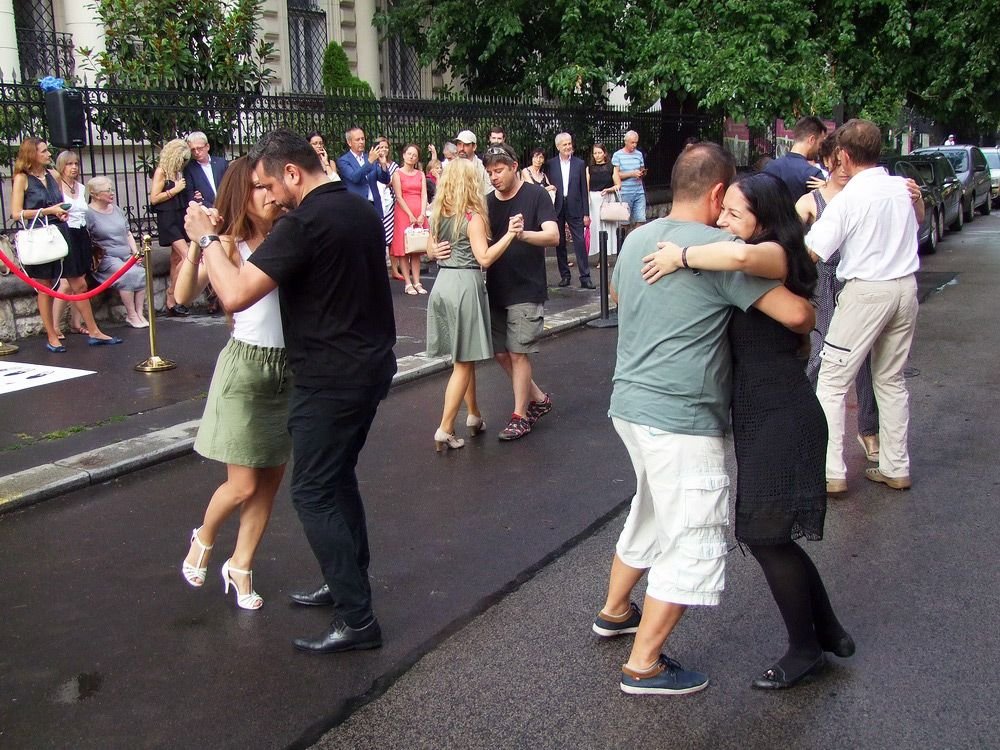
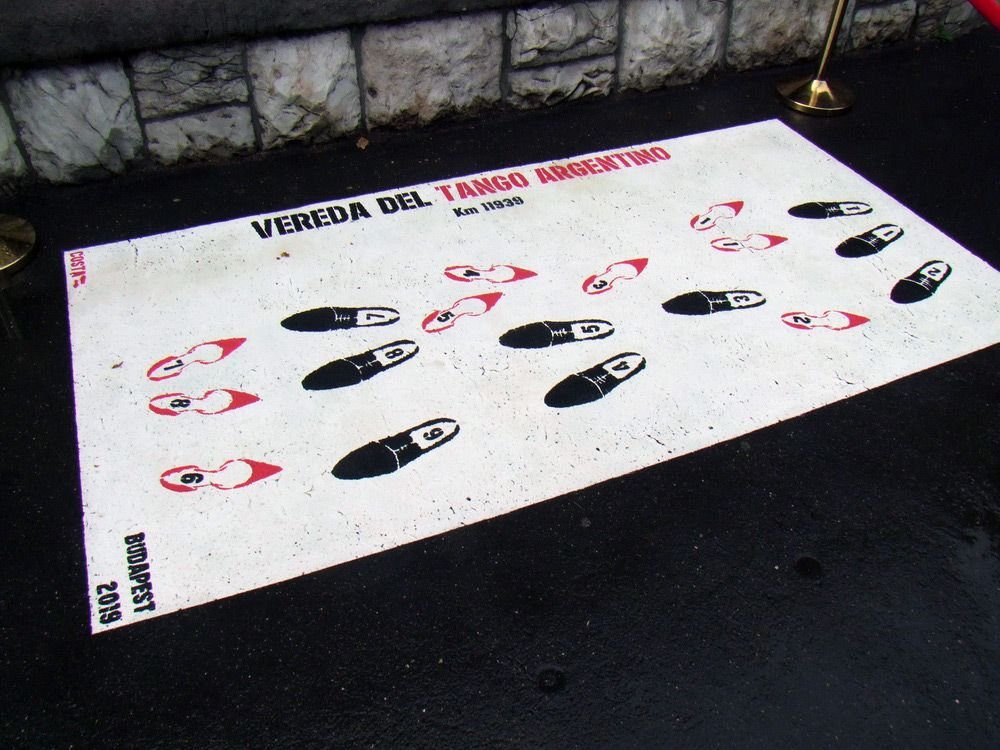
bettina.costa@coaster.ch
www.art.coaster.ch


Hungarian cultural portal
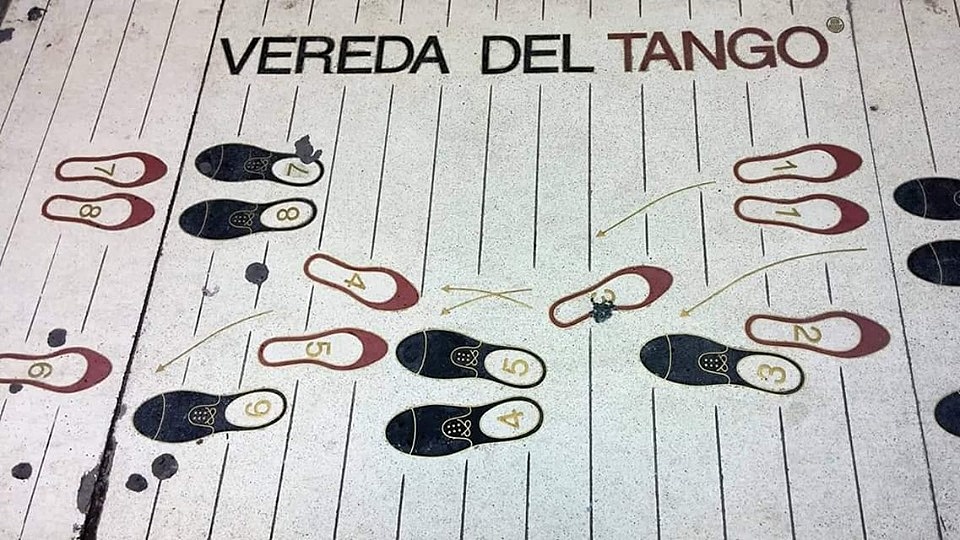
Created by the Argentine artist Bettina Costa, the artwork on the asphalt of Budapest recalls the eight basic steps of tango in the streets of Buenos Aires.
Anyone who has ever walked through Buenos Aires has probably come across a «Vereda del Tango».
With this representation on the asphalt that symbolizes the eight basic steps of dance, anyone can learn to dance tango or, at least, try to.
The «Veredas del Tango» are found in various districts of Buenos Aires and
they are the symbol of the «City of Tango». They are meant to encourage people to practice a few tango steps. The most famous vereda is located on Avenida Callao 1078 in Buenos Aires and carries «Km 0» as identification.

With the project «Vereda del Tango – Km 11939», the artist Bettina Costa tries to reproduce the tango atmosphere in Budapest. In front of the Argentine Embassy, at 96 Andrássy Avenue, she painted the hungarian version of a «Vereda del Tango».
It is identified with «Km 11939» because it is exactly at this distance from the «Vereda del Tango – Km 0».
Bettina Costa was born in Argentina; the cradle of tango. However she never paid much attention to this part of her culture. She considered tango as something «for old people». She was never interested in tango until she emigrated.
At the beginning of the twentieth century, Argentina was full of immigrants seeking their fortune in that country and hoping to return to Europe or bring their families across the ocean.

The tango lyrics reflect the deep feeling of loss of these immigrants and the nostalgia for the people and places they left behind. Tango helped them to forget their worries.
I am also an immigrant; I came to Switzerland for a quite different reason. I was never homesick, but perhaps unconsciously I was looking for something not to lose my roots. With tango, I found it.
The last few years the artist have intensively dealt with the subject tango. Besides painting, she began to work with collages and stencils, the latter influenced by street art.
The first «Vereda del Tango» outside from Argentina is located in Rheinfelden, Switzerland, exactly 11255 Km away from the «Vereda del Tango – Km 0» in Buenos Aires.

Then, followed carpet installations: shoe-shapes cut on carpet and placed on the floor or on a wall; during the Art Basel week 2017 the project «Cancha de Tango»: tango steps marked with whiting spray on rolling-grass or the installation «Tangország» last year during the Art Market Budapest.
Pieces of art are contemporary witnesses; they are reflections of the respective cultural policy, the spirit of the time and the understanding of art. After 6 years, it was time to revise the first map of art of the city. In addition to sculptures, statues and stained glass windows, paintings and buildings are now also listed. Some objects have been in their places for decades, others were just recently added; some are part of the cityscape, others are hardly consciously noticed; pieces of art by «amateurs» are just as present as those by (locally, regionally and world-) renowned artists; and there is art to discover not only in the old town, but also outside the city walls.
The city map «Art and Architecture in Rheinfelden» contains a subjective selection, without wanting to make an art-historical assessment and without taking into account urban planning or spatial design aspects.

ART PILE UP
Sat 21 / Sun 22 September 2019
– Saturday from 14 to 18
– Sunday from 11 to 18
